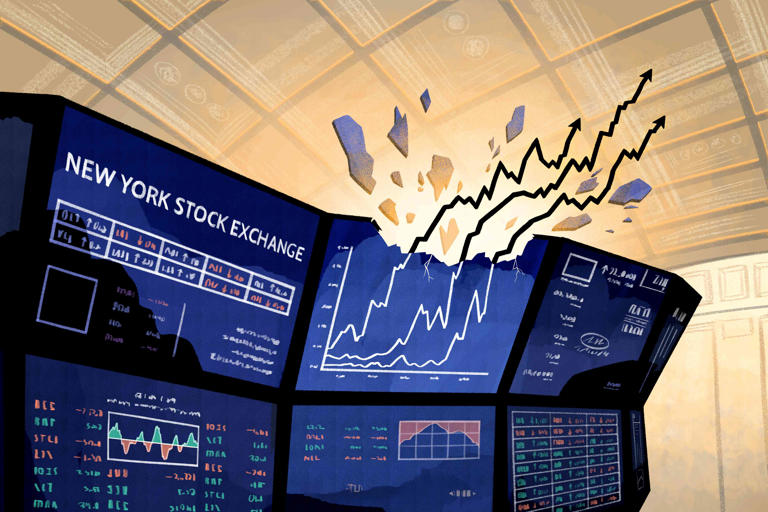The second quarter of 2024 proved to be a dynamic period for the S&P 500, marked by significant movements driven largely by the performance of specific sectors and influential tech stocks. Despite broader economic challenges and sectoral disparities, the index managed to gain nearly 4%, reaching new record highs multiple times throughout the quarter. This buoyancy was primarily fueled by the remarkable performance of semiconductor stocks and the resurgence of tech mega-caps, notably driven by advancements in artificial intelligence (AI) technologies.
AI emerged as a transformative force not only within the tech sector but also across other industries, such as utilities and green energy, where considerations of AI’s vast electricity demands became increasingly relevant to investors. This thematic investment approach underscored the market’s adaptation to technological advancements that promise efficiency gains and innovative solutions.
Within the tech sector, Nvidia and Apple exemplified the profound impact of AI-related growth. Nvidia saw its stock surge by 36% during the quarter, propelled by robust demand for its chips powering AI infrastructure. Apple rebounded strongly from earlier setbacks in the first quarter, contributing significantly to overall market optimism with its renewed growth trajectory. These tech giants, commanding market capitalizations exceeding $3 trillion collectively, played pivotal roles in masking broader market weaknesses and sustaining investor confidence.
Despite the overall market positivity, sectoral performance was starkly divergent. Only three sectors—Information Technology, Communication Services, and Utilities—managed to either outperform or closely match the S&P 500’s gains. Within the tech sector itself, semiconductors emerged as standout performers, benefiting from heightened demand in AI-driven applications and infrastructure. In contrast, segments like software and internet services faced challenges, with notable declines seen in companies like Salesforce, Shopify, and MongoDB, primarily due to disappointing earnings reports and market sentiment shifts.
The disparity between the market-cap-weighted S&P 500 and its equal-weight counterpart (Invesco S&P 500 Equal Weight ETF) underscored the concentration risk posed by a handful of mega-cap stocks. This concentration in tech, notably with Microsoft, Nvidia, and Apple collectively worth four times the entire Russell 2000 index of small-cap stocks, raised concerns among analysts about market resilience and potential corrections.
Looking forward, analysts have expressed cautious optimism tempered with concerns. Key worries include the narrow breadth of market participation, where the majority of S&P 500 components underperformed despite headline index gains. Additionally, the extended valuations of semiconductor stocks and the disproportionate influence of tech on the broader market outlook suggest vulnerabilities that could lead to corrections or pullbacks.
However, historical trends suggest that strong first-half gains often pave the way for continued market resilience in the second half of the year, particularly if corporate earnings remain robust across sectors. As investors await second-quarter earnings reports, these financial results are anticipated to provide critical insights into whether the market can sustain its upward trajectory amidst sectoral challenges and broader economic uncertainties.
In conclusion, while the second quarter of 2024 showcased the resilience and innovation within the tech and semiconductor sectors, ongoing concerns about market breadth, sectoral imbalances, and valuation pressures necessitate vigilant monitoring and strategic investment approaches. Investors are advised to navigate these dynamics carefully, leveraging insights from earnings reports and emerging trends in AI and tech to inform their investment decisions moving forward.
